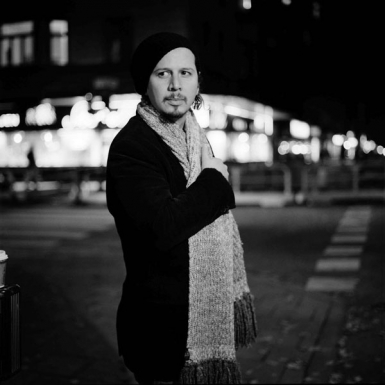“Eyes cheat,” Juan-Pedro Fabra Guemberena seems to warn constantly, from the top of cliffs and amidst the dense Nordic forests of his videos, which are much more than landscapes and are far from representing the bucolic escape for a perfect or naïve world.
Exiled in Sweden since he was a child, due to the Uruguayan dictatorship, the artist now shows the shades and uncertainties of the sceneries he raises and that have the majesty of nature as an ally. There, man mingles, becomes soil, rock, or leaf. The picture hides nothing, but requires that the observer’s time and perspicacity little by little reveal the mysteries and surprises that may be hidden in an apparently simple narrative.
Sheer size appears grossly and theatrically. It is the stage in which man moves, made into one more factor among the entwined elementary and whimsical forces. There, in the uncontrollable dynamics of the wild world, the artist finds a mirror into sites that are less visited by the human soul, impulses that blow up the “very confusing historic moment” we are living, as he himself defined it in the interview for this Dossier.
Two factors compete for the dissolution of individual identity in this universe cut only by the sea, wind, and vegetation: uniform and camouflage. Intimately and fundamentally connected to notions of power, defense, combat, and death, military costumes and their artifices fascinate Fabra Guemberena. The exercises, the publicizing of official images of recent conflicts, seen as the “theater of war”—and, therefore, represented within a series of sceneries—, are the mottos of the author’s investigations, geared at, as he says, building a “calligraphy of violence.”
Juan-Pedro Fabra Guemberena is the last creator presented within the FF>>Dossier curatorship (A)Pareço, logo existo [I appear, therefore I am], a series that detailed the work of four Uruguayan artists who have the simulacrum, seduction through image, and the manipulation of codes and contemporary media tactics as their tools and/or as the fundaments for their work.
“Like painters, Fabra works in the tradition of optic images and could even say: ‘I paint without painting,’” analyzes critic Ángel Kalenberg in the essay about the author for this edition. “The images he creates express the same terrors announced by the sculptures of German gothic cathedrals. They may be the projection of the infant world of suffering he had to live.”
Further info on this artist available at the collection
